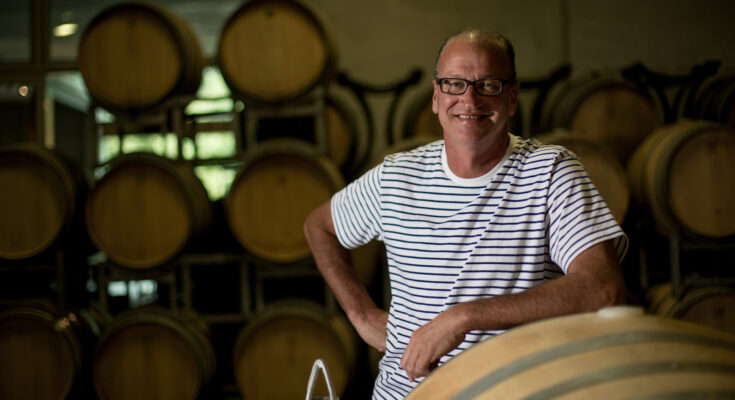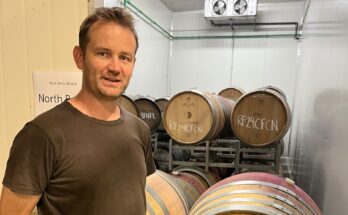A bit like the list of Top 10 New Zealand Chardonnays that lives in my head (and is acquiring something of a reputation) there’s a list of winemakers that I definitely want to talk to, somewhere in there, too.
Going down to wine country certainly helps ease the burden – and there’s no doubt we’ve talked to a few winemakers already, with more to come. But there are people whose experience, intuition, critical acclaim and reputation, would naturally place them high on any hitlist? Of course, anyone would have their own personal favourites; but personally, there’s a handful in New Zealand that I reckon really get to the ‘soul’ of wine. Today we’re talking to one of those.
Midway through my visit to Hawke’s Bay I called into Trinity Hill to meet Warren and Cara for a chat, and taste a chosen few wines.
WineFolio: So glad to finally make it to Trinity Hill, after lockdown and everything! I had one of your Syrahs during the time we weren’t allowed out.
Warren Gibson: We are known for our Syrah. It’s also not just Gimblett Gravels, but Hawke’s Bay Syrah – and some of the hillsides and Bridge Pa and beyond that are being explored. It’s the one wine style that we’re getting international acclaim for. Where the response is ‘wow, I’m not sure I’ve tasted a wine like that’.
WF: And yet it’s so small?
WG: Yes, it is small. I don’t see that as a negative, I see it as a strength. It could get bigger but you can see what’s happened with New Zealand Pinot. It’s almost everywhere now; certainly south of Hawke’s Bay. I’m sure it’s in too many places – and places where it shouldn’t be.. but equally there’s a massive strength there that is really helping the style.
Syrah is very small – but for us, in Hawke’s Bay, it’s the most exciting, and has the most potential for maximising what we have in terms of our land. Chardonnay is the other grape variety, but it’s harder to get that definition of a sense of place with that. But almost everywhere has that same issue.
WF: I know you have that connection with Jaboulet. Do you think one day we’ll be able to put our Syrah next to La Chappelle and be at the same table?
WG: The Jaboulet thing is a long term historical link, but, in reality, it’s more the inspiration and the style. We’re not trying to mimic it, because we can’t. Something a bit lighter on its feet, and fresh and vibrant is the way that the world is going with food and beverage. It’s much more attractive to most people these days than these heavy, full, high-alcohol, and overly structured wine. Even in Australia the Shiraz – and the labelling – is moving more towards Syrah.
WF: Do you think Climate change will affect things like that – surely it will in Australia, but here in New Zealand?
WG: I’ve been in Hawke’s Bay for over twenty years and certainly the weather is not getting worse and not getting wetter, and not necessarily getting warmer. In fact, the last few years have been pretty good. The last three vintages have been some of the best we’ve had in those twenty years. ’11 and ’12 were difficult but since then there has only been one vintage that’s not been good. We’ve not got the big subtropical lows that were predicted. But I don’t think this is a big sample size of the global change. It’s just what’s happened here.
WF: What about some of the spin-offs from that? Glass, water?
WG: We could go away from glass, but I’d like to think it could be a more attractive proposition than tetrapaks. Pouches, for a certain quality and price point, for sure. I personally think there is quite a lot of water everywhere in New Zealand, but it’s either not being stored very well, or in the case of Hawke’s Bay, a lot disappears out to sea. And then there’s the issue with the dam and all that, and the politics on that. If New Zealand has problems with water, then the world is pretty much knackered. The issues in Napier – there’s not enough water in Napier – give us a break!? It’s a storage issue, we need a way to hold it.
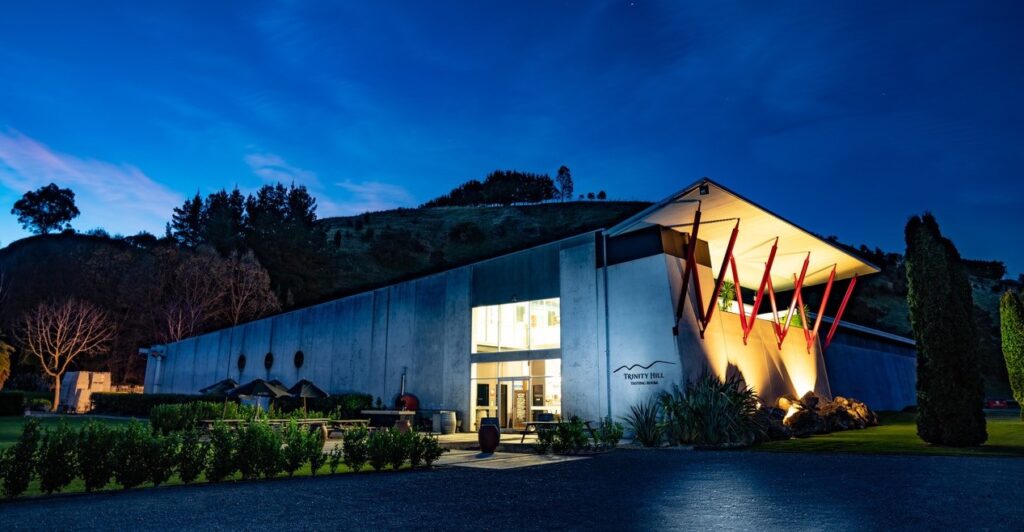
Five rivers come into Hawke’s Bay, onto the plains. The Ngaharuro river is right here; and if you have a glass of water from here – it’s some of the best water in the world. What you see on top gets into very low flow sometimes, but there’s a lot of debate about what’s underground. There’s huge research at the moment about whether the horticulture and viticulture are actually making a difference. And it’s very debatable, but at the moment there are no new bores, so you have to have an existing water right and you won’t get any more than that. It’s the right thing to be thinking about.
We irrigate on the very stony soils. But I think in time, with closer planting and drought-resistant rootstocks we should be able to move away from irrigation. How many of the vineyards in the really gravelly soils are in that position? I have a small vineyard myself, on gravel, and I have almost weaned it off the water completely. But I’ve planted 1.75/1m. I still like to turn it on occasionally but it’s only there as an option. The issue is on the very stony soils if you don’t have either very close planting or it’s got maturity. There’s a stigma is that irrigation is bad, but in fact, that’s what a plant wants – you don’t just watch your garden die.
We make wine pretty traditionally here – you’re not going to see anything new or exciting. Certainly, with our premium wines, we try to be as hands-off as possible. We’re a medium-sized winery for New Zealand. We would harvest between four to eight hundred tonnes, as a range – depending on the vintage and where we were. 500 tonne would be 35,000 cases. We’ve got two barrel rooms, and traditionally the barriques were what a lot of New Zealand winemakers have been using for premium wines; but as we understand more we’ve moved more towards the larger format. Our Gimblett Gravels Chardonnay is now fermented in puncheons – 500 litres.
People say “why do you have all the different sizes?” Well – stainless steel is very inert, very pure and clean, so a bit like a CD – nothing wrong – almost perfect but a lack of definition? For us, ageing in these bigger format barrels with thick staves – and not toasted – is giving the wine more life – so more like vinyl. You can feel something that’s not so pure and clean, a bit more alive. The smaller you go, the more impact it has. A wine in a large format will show its true beauty. As you go smaller it’s layering on make-up, obscuring the beauty of the wine. Stainless steel, a bit like screw cap if you’re not careful, can close the wine down a bit.
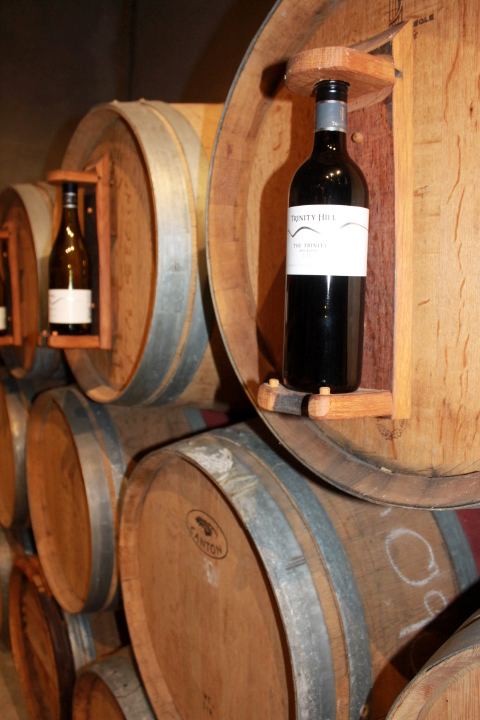
With chardonnay, there is a lot of sense in 12 months ageing because you can utilise the barrel for the next vintage. For our vineyards and our winemaking style, we moved from the smaller barrel 228-litre barriques which were too heavy and too oaky and invasive. We could have pulled the wine out earlier – say 8 months but weren’t achieving the flavour profile and the wine wasn’t ready at 8 months. Rather than change the time in barrel we changed the size of the barrel.
Most of the 2020 chardonnay in these barrels has been hand-harvested, brought to the winery, pressed, and with a pump and a hose it’s filled straight into the barrel. We add a very small amount of sulphur dioxide just to knock any real nasties on the head, so that the good, natural indigenous flora of yeast we have in this winery – which we’re very comfortable with now – will do the fermentation. So four or five days later the barrel starts fermenting; and later on most of our wines will go through a full malolactic fermentation with indigenous too. Our chardonnay is grapes and SO2.
Our Syrah equally we are moving much more towards taking the machinery out of play – a lot of whole cluster fermentation. Which is traditional – there didn’t use to be machines to take away the stems… you used to pick your grapes and you jumped on them!
WF: In terms of whole bunch, do you agree with that school of thought that says you either do it or you don’t? You don’t fiddle with it, like 20% in? It’s a bit polarising.
WG: I’ve seen good results with lots of techniques so I don’t have a strong view. Some of our tanks we can’t get whole bunches into – they’re not made that way, so we can’t do it. I think maybe I would prefer to do one tank that’s going to be part of the blend as a whole cluster – and have that profile, and then blend it. If you did 25% of everything you don’t know what you’re going to get. We do try all of those techniques.
The winery was built in 1996 for the 1997 harvest but it’s very serviceable. This year with Level 4 and 3, Sebastian, Jamie, and I did everything pretty much ourselves. 2 people in the winery and Jamie looking after all the recordkeeping and editions and things. It’s quite an easy winery to work. We don’t have any fancy gear – I don’t believe you have to, to make good wine. This year we made good wine without it.
WF: The technology helps though?
WG: It does. At the end of the day, you should be focussing on your vineyard, the right site, the right varieties, and all of the management there. Then, providing it’s a good season, we can only muck it up, in the winery. You need to know what you shouldn’t do, as well.
WF: Is it a case of the more you know, the more confident you are about doing less?
WG: Absolutely, yes. Knowing exactly what not to do. There’s the odd problem, but blending is always your friend.
If something is very valuable – or, imagine it’s your own wine… then what would you do – and that’s probably the right thing to do. I don’t remember ever putting any wine down the drain. It’s part of our responsibility to not make mistakes.
From our very first vintage, there were two tiers. The Hawke’s Bay is a regional blend. Every drop of wine we make is from Hawke’s Bay, and the white label will contain around 4-5 sites right across the region. From Haumoana through to Central Hawke’s Bay. Chardonnay was very unfashionable back in the ’90s and early 2000s, and it wasn’t understood that the big fat, heavy, oaky, malo. The pendulum of Chardonnay has swung a lot and it’s found a better place.
WF: What about that reductive quality in Chardonnay that seemed to be in vogue for a while?
WG: I think it’s a love it or hate it, and I think the Wine Show system did reward some of those wines. But it’s all about balance. An element of anything, like struck match, or whole bunch – if it’s the only thing leading it and there’s nothing in behind, then it shouldn’t be rewarded. At least it was a talking point and got people thinking and writing about Chardonnay. As you go up the price points and the concentration and style – you can introduce elements like that.
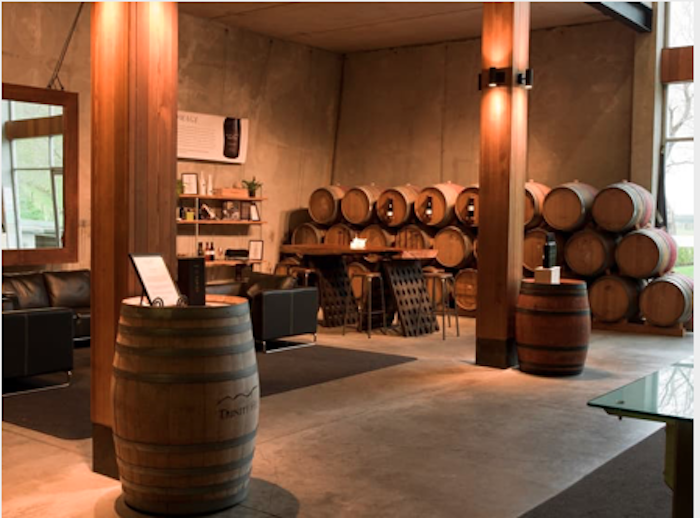
In a wine like our $20 Chardonnay we don’t really want to see any funk factor – something delicious that you can just drink a glass of and enjoy. Not an intellectual wine but equally not a simple, fruity, boring white wine. It’s hard for anyone to make a great, rich chardonnay, but young. It becomes that over a few years of opening up. You seem to have more freedom when you head to the higher price points. You can go freestyle. When we blend the Hawke’s Bay range we’ll open the last two vintages to compare; and we don’t have a spec sheet that we have to follow, but we have a style. This should be a true statement of Hawke’s Bay Chardonnay.
If you come here in summer and go to the vineyards, you’ll see some producers do a lot of leaf removal. For some red varieties, that’s a good thing to get the light and it helps with the disease pressure. But with Chardonnay the more leaf removal you do, the more over-exposure you get and your fruit tends to be less in the citrus spectrum and more in the heavy over-ripe side. We think it’s as much as making our Chardonnay in the vineyard as the winemaking.
I think there’s a tendency for Chardonnay to be released too early. I don’t mind too much for that Hawke’s Bay style. Our Gimblett Gravels Chardonnay is always at least one year behind the Hawke’s Bay one. It’s all Gimblett Gravels fruit – this one is grown down the end of Gimblett Road and the soil is quite silty. Chardonnay does like being on slightly heavier soil, whether it’s clay or silts. It just helps with the body of the wine. The clones were initially driven by what had been planted around 2000 to 2010, which was B95; but we’ve now got Mendoza and Clone 15 and a muscaty clone called 809. Often it comes down to vine health as well as where it’s grown – lots of variables!
Our Gimblett Gravels Chardonnay is $39, but we like to line it up with the higher end ones from New Zealand. When you look at it against white burgundy and some of the more expensive New Zealand or Australian wines, it’s great value.
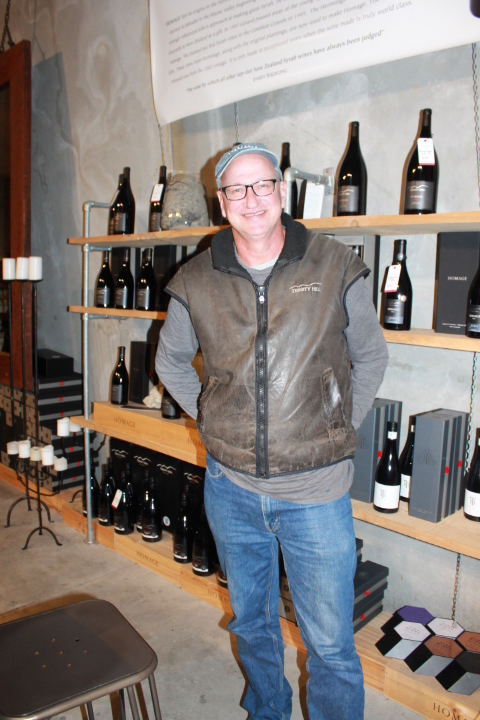
With the English distributors, Liberty Wines, it’s this wine and the Syrah that really attracted them to have our portfolio. David Gleave, who is the founder of Liberty Wines, is a massive fan of this.
From their first vintage, Trinity Hill has made a Gimblett Gravels Cabernet-based wine. In some years a straight Merlot or a straight Cabernet as well. In time have realised that we should just make one wine, and ideally Cabernet predominant.
Merlot is always a smaller part of this wine, but we have lost our love for Malbec – we’ve actually pulled it out. That might go against what some others will say!
The clone we have is what the French call ‘Cot’ and has massive bunches, and it’s dramatic and got a lot of colour, but it doesn’t help the wine. It’s quite luxurious winemaking for its price point. Quite a high percentage of new French oak, which goes really well with Cabernet. We only really use oak for Chardonnay and Cabernet in this winery. A little bit for Syrah.
WF: And in those new wines you made last year – there was a Cabernet there that I didn’t get to try?
WG: ‘Prison Block’. It was here then it was gone. And that’s testament to the $40 wine, and we were selling the Prison block for $120. For it to sell out like that – it was truly a celebration of Cabernet Sauvignon. And it showed that we could do it at that level. We will make a 2019 and ’20 of Prison Block, so you’ll get to see those.
WF: As well as the technology being here at just the right time to help the NZ wine industry develop, you can’t go past the facts that we’ve had development in vine age, but also experience, where we’ve had people now passing the reins on to others and that accumulation of expertise and intuition has its benefits?
WG: And if any viticulturist or winemaking team have been somewhere for a while -that’s where the ‘house style’ starts appearing as well. And hopefully, it’s a good one. It’s your interpretation of what your vineyards are. You shouldn’t be too dogmatic about making wine that you like, that you want – there should be respect to the market. What is the best representation but that the market also wants.
WF: Is there any point during the year where you get a ‘lightbulb’ moment?
WG: Normally when it’s all under the roof and then it rains! (laughing) We’ve gone through some difficult seasons. 2017 was particularly difficult. We got the Chardonnay off and then it all turned to crap. We are very wary of a warm early season, and it’s dry – because we know something’s coming! In ’19 and ’20 it never came, and ’13 it didn’t come, and ’14 it got us at the end. This year was ridiculous. We were so lucky to be able to harvest, being an essential business. I hardly looked at the weather forecast – I got lazy. You know. How good it is leading up to picking, and once you’ve got it in the winery. The numbers maybe back up your thoughts – the numbers don’t mean much to me. You don’t taste numbers.
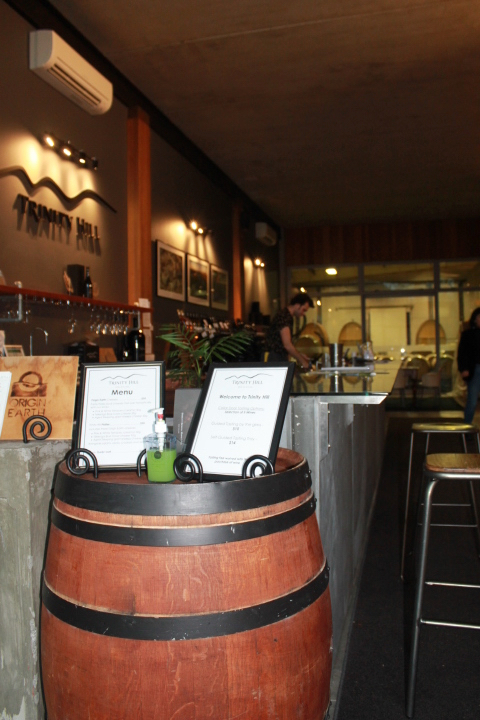
For the Gimblett Gravels Cabernet, there’s nothing we do that’s necessarily unique. We do ferment everything separately as the varieties ripen at slightly different times. And we blend coming up to the next vintage.
WF: Is that one of your favourite bits – the blending?
WG: Yeah it is. And you’d need to have a good understanding from the Sales and Marketing Dept. to lock it down. We can say ‘well once we get over this case number, we feel we’re starting to lose the absolute quality’ and they’ll say ‘well this is the cases we need’ so you’ve got to work around, and massage that. But it is fun. You’ve got an accumulation of information from growing, season, picking, fermenting, ageing – you sort of know by then what you want to do. And then you’ll do a blind and hopefully that backs it up.
And you don’t want to have too many people voting on the blends; because like anything you get an averaging effect. Some wineries, their owners will come and sit in on the tasting and you have to be deferential to them. But it’s like ‘no, once they go…’ (laughs). And things like having a history of which batches will deliver. It might not be the most glossy on the day but you know that’s worked in the past, so you’ve got that historical ammunition in your head. We know which parts of the vineyard deliver.
WF: So it’s your decision when to pick? And that’s on taste?
WG: Yes. It’s on a lot of things. Taste, numbers, forecast, logistics – we can’t pick it all on the same day – it takes us 25 to 30 days to pick our harvest. I’ve got to look after my staff’s interests in terms of their time. We don’t work a night shift; we’ll do split shifts and that sort of thing.
WF: And was this COVID one different?
WG: We only have three people. If one of us got an injury we’d have had to stop. There were some jobs we couldn’t physically do and we had to get the truck driver to help us to do. Like pull up a hose… so it got very close. And yet it was probably our best vintage ever in terms of quality. And the weather helped – we didn’t get any rain. The ’20s will be amazing – as are the ’19s and to a certain extent the ’18s too.
With our Syrahs, you’ll see we totally over-deliver at the Hawke’s Bay $20 price point – it’s almost a problem. It’s 100% Gimblett Gravels fruit too and has not been embellished with any oak, so it’s just stainless steel, and bottled early. There is this tendency in the New World that good wines need oak, but we don’t believe that Syrah is one of those grape varieties that does. I love the things like northern Italian Nebbiolo and Barbera and Spanish Tempranillo that’s made in this style where it doesn’t have any oak. More so than the stuff that’s been left in the barrel for way too long. We use that as an inspiration for this style.
You go to the cupboard or your cellar to get a bottle of wine… I just want something delicious. I want to go to the ‘light’ side, not the ‘dark’ side which means I don’t want heavy, I don’t want too much oak, I don’t want too much alcohol. Like a very good Pinot Noir. It’s not Pinot Noir but I want something that’s got that factor. And that’s what we think when we make Syrah. Even right up to the Homage…although we do need to deliver a lot more concentration and ageability when we get to that price point – and some wow factor!
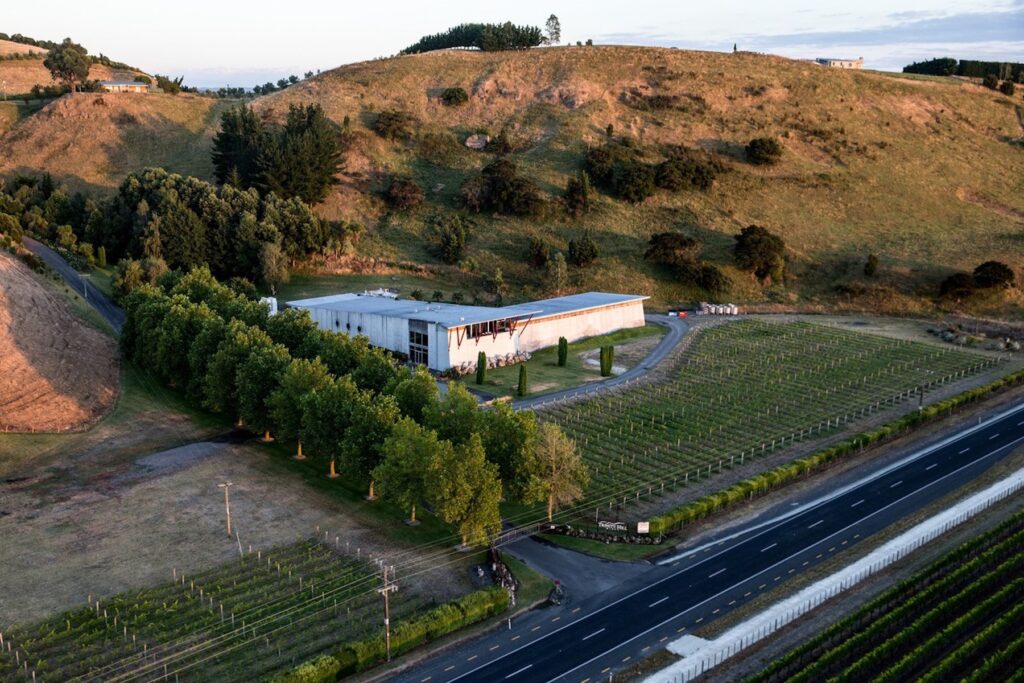
Our next Syrah up does seem some oak, but pretty traditional winemaking again. De-stemmed, so no whole bunch – keep it simple… red fruit, lovely and delicious. We’re one of the wineries that utilises a bit of Viognier in our wines. It’s always been a part of our style. And it’s not a necessity – if it works, it works. The timing is sometimes quite tricky as Viognier ripens quite early, so maybe it’s over-ripe if you wait for the Syrah to ripen. But generally one of our earlier lots will get a co-fermentation and we get a lovely floral note.
There is an element of whole bunch in the Homage. With whole-cluster it brings a spice to the aromatics and a freshness. Generally, whole cluster tends to bring the perceived ripeness back, so it suits more so the riper years than the less ripe years. And there’s a lot of discussion about the stems need to be ripe which we’re less concerned about, but in cooler, greener years we’d be less likely to do whole cluster.
The difficulty I think to sell a lot of the Gimblett Gravels Syrah is that there’s quite a crowded market at that $39 price point. You almost create a new customer when you get here (points at the Homage). People buy here and here (the Hawke’s Bay Syrah). This is an ongoing battle for New Zealand wine because this is the price that probably the quality and the cost justify, but it’s not a sweet spot for sales. You go and look in the bottle stores and how many $30-40 Pinots and Syrahs there are. And there’s a lot. It’s where they have to be but how many New Zealanders are buying those wines? Not many.
We are very wary on the Gravels that we don’t give you a wine that’s grippy and tannic. It’s something that we think a lot about. We think about it at fermentation time because that’s largely where it’s derived. But we think about it a lot when we’re blending. There are things that we can do to manipulate it but we prefer not to. We’re not trying to give you a big flabby soft, sweet thing which a lot of red wine in the world has 10 grams of residual sugar in it. You wouldn’t know it but it does. We’re presenting a wine that is essentially dry, with tannins that are there but they’re not heavy and strong.
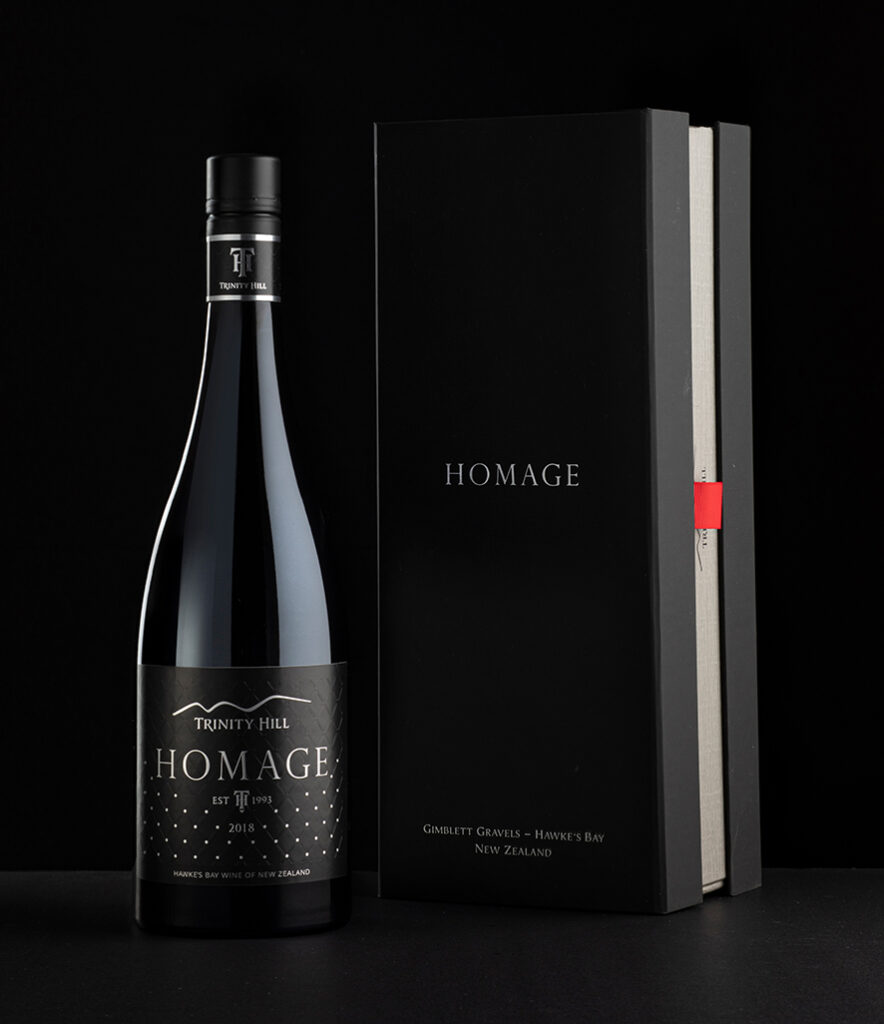
WF: So, Homage – what’s the story with the new packaging and the screwcap?
WG: There was a perception that you couldn’t see the vintage very well on the previous label. But the main shift has been the screwcap and the lighter bottle.
WF: It’s still heavy. It’s gone from being ridiculously heavy to just heavy. It is noticeably lighter.. (laughs) and I totally agree about the vintage – it was quite hard to see. It’s still got that luxury branding feel to it, kind of Prada. If I was going to choose one I’d go for the older one you had – around 2010.
WG: We have been trialling screwcap since 2000. And Homage was the last wine under natural cork. Essentially we believe we are delivering better wine and that every bottle will deliver what we expect. We wanted to move away from that ridiculously heavy bottle as well, but to keep a premium feel to it. We did a trial with Homage in 2010 which was a beautiful vintage with more than one closure, including screwcap. We still have that trial and have been tasting that for the last eight years. The screwcap version is still very fresh but beautifully aged, and the cork is all over the show. Some bottles are tired, some are quite good, and some are as least as good as the screwcap. One we sent to Bob Campbell and he liked the cork a lot, but also liked the screwcap a lot. I think every bottle’s different.
WF: I think it’s very astute of you to have done that. So that if anyone questions it, you can come back and show the methods you’ve used to come to that conclusion.
WG: We’re trying to get on the front foot. It’s not like it’s an overnight decision. It’s twenty years of trial. During that time that we were trialling screwcap, and for different reasons, we starting ageing our red wine without any sulphur in the barrels. This is part of a trial of expressing the tannins, which can be quite strong in the Gimblett Gravels, in a better way. We found that the wines were much more open and delicious. When we added sulphur to the wine the tannins got pinched and bit more angular. Then once we were bottling under screwcap, our red wine, providing the microbiology was good, we started to theorise ‘how much sulphur do you need to bottle?’ because the screwcap is non-permeable. As long as the wine’s in good condition and there is enough sulphur to stop is smelling like aldehyde? There wasn’t really any literature because it’s relatively new, and we came to realise that we could bottle our red wines with a lot less sulphur than under cork, because cork keeps giving more oxygen to the wines. We’re able to age and bottle all of our wines, and, more importantly, now Homage – with a lot less sulphur.

